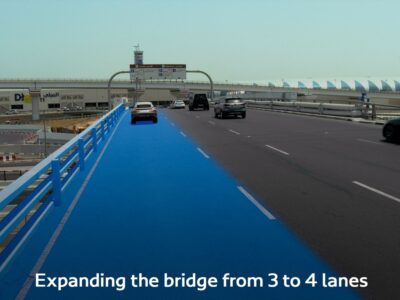Over the past few years, the world experienced a dramatic shift to online as retailers adapted to the pandemic. Indeed, retail was already going through rapid digital transformation that the pandemic accelerated significantly.
Now in a post-pandemic world, retailers are undoubtedly shifting towards greater personalisation and digitalisation to capitalise on the advancing technology causing the boom in online sales.
In response to the increase in e-commerce, physical retail environments are simplifying in-person transactions to make shopping as convenient and stress-free as possible.
Enabled by mobile digital tools, retailers are offering more bespoke, localised and service-based experiences.
Data is leveraged and driving customisation of offerings to consumers with past purchases and preferences used to target future shopping decisions.
Role of technology
Technology is accelerating the pace of change in retail with personalised shopping giving customers an authentic and convenient experience. Consumers now have the choice to shop online and in-person making the overall retail experience more bespoke.
During the pandemic, retailers who quickly adapted and harnessed the power of technology thrived with enhanced service-based experiences.
According to Euromonitor, in 2020, the UAE retail e-commerce market reached a record value of $3.9billion, 53 percent higher than 2019. It is expected that by 2025, the UAE’s retail e-commerce market value will reach $8bn.
Technology within the physical store will focus on digitalising operations and enabling employees to deliver a more personalised shopping experience where product advice and brand advocacy come across with greater authenticity.
Indeed, according to RedSeer, the digital economy of the Middle East, North Africa and Pakistan is set to exceed $100bn this year and has the potential to reach $700bn by 2030 if backed by adequate investment.

Increased personalisation
A recent Forrester report revealed that personalisation ranked the highest in the list of tech investments in 2021 with 89 percent of digital businesses investing in personalisation.
However, only 40 percent of consumers feel that the information they get from brands is relevant to their tastes and interests.
Moving forward, thriving retailers will harness the right data to increase personalisation and enhance service-based experiences.
Digital interactions must focus on the consumer rather than the brand and leverage integrated technology that links to their profile online, which seamlessly extends into the physical realm.
The customer-centric, technology driven evolution will accelerate changes in retail towards convenience.

The retail store
In response to the phenomenal e-commerce growth, the retail store is focusing on key themes of escapism, sustainability, access to nature and multi-sensory experiences.
The store elevates the conversation beyond anyone purchase and taps into the lifestyle and well-being aspirations of its clientele through seamless and responsive technology.
Urban malls and high streets are finding new opportunities to reconnect, recharge and redefine the community by recurving existing structures and adding new residential, commercial, and hospitality offers into the mix.
This blend of experience is critical to ensure retail spaces are productive and profitable with spaces for the new economy having different uses at different times of the day thus increasing personalisation opportunities.
Retailers are already redesigning brick and mortar locations to accommodate product distribution, converting retail stores into micro fulfillment spaces and offering curbside pick-up and return services.
Indeed, many large stores are also looking to distribute essential customer services across a small network of physical locations. As brands evolve to remain culturally relevant and competitively positioned, the built environment is in constant motion.








